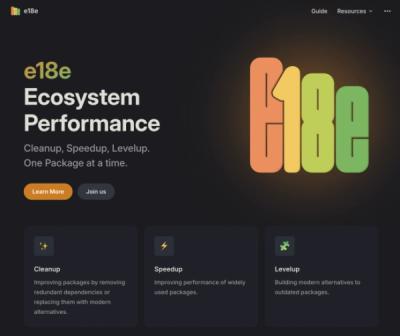backpack-react-scripts
This package is a fork of Create React App (specifically the
react-scripts package). It's intended to be used in conjuction with create-react-app like so:
npm install -g create-react-app
create-react-app my-app --scripts-version=backpack-react-scripts
cd my-app
npm start
Why fork?
Out of the box, create-react-app doesn't work well with Backpack components because it has no support for
Sass stylesheets or uncompiled dependencies in the node_modules folder. We also want to be able to tailor
the template to use Backpack out-the-box.
What is different in our fork?
This is a high-level overview of the changed we made to this fork.
Moved ESLint from Webpack to npm script
See config/webpack.config.{dev,prod}.js, package.json, scripts/{eject,init}.js, template/.eslintrc
By default, react-scripts runs all code through ESLint on build. As our ESLint configuration is quite opinionated, we have disabled this functionality.
We have added an npm script so you can still run the linter at will using npm run lint.
Added stylelint configuration
See package.json, template/.stylelintrc.json
We added Skyscanner's Stylelint configuration.
Added in Backpack components
See scripts/init.js, template/src/*
We pre-install some Backpack components to help you get started quickly.
Added a server-side rendering (SSR) Webpack configuration
See config/webpack.config.ssr.js
This Webpack configuration is used to to enable easy server-side rendering. It is derived from config/webpack.config.prod.js.
Everything that we don't need from the prod config is not removed, but commented out.
Moved React and ReactDOM from dependencies to devDependencies
See scripts/init.js
Any app built with backpack-react-scripts should always output a bundle, and therefore it is enough to keep React and ReactDOM in devDependencies. In many cases, they should also be external dependencies (not part of the bundle).
As the CRA CLI install React and ReactDOM, we cannot really do anything about that; but we can move the entries in package.json from dependencies to devDependencies.
Enabled CSS Modules
See config/webpack.config.{dev,prod,ssr}.js
All Sass files are by default treated as CSS Modules. You can opt out of this behaviour using the following config option:
"backpack-react-scripts": {
"cssModules": false
}
If you decide to opt out, Sass files will not be treated as CSS Modules by default. However, you can opt-in on a per-file basis using the naming convention: *.module.scss.
Backpack components will always be treated as CSS Modules, even if you opt out
Releasing a new version of backpack-react-scripts
-
To publish a new version of backpack-react-scripts, run the following command:
npm run publish -- --scope backpack-react-scripts
-
You will be prompted to select a new semver version (MAJOR, MINOR, PATCH). Use the CHANGELOG.md to decide on the nature of the changes since the last release.
- If you want to be extra careful, you can publish a prerelease by running this instead:
npm run publish -- --scope backpack-react-scripts --canary
-
Update the CHANGELOG.md with the new version, taking care to follow the format of previous releases.
Keeping this fork updated
We wish to keep this fork updated with the upstream repo to benefit from the ongoing open source development
of create-react-app. To keep this fork up to date, please follow the steps below:
-
Ensure master is in sync with upstream/master:
git checkout master
git remote add upstream git@github.com:facebook/create-react-app.git
git fetch upstream
git reset --hard upstream/master
git push --force-with-lease
-
Rebase fork on top of a tagged release on master:
git checkout fork
git rebase <commit>
Note: <commit> should be the SHA-1 of the latest upstream release - not just the latest i.e. upstream/master
-
Pair with someone else to fix any conflicts and cross examine changes in upstream with changes in our fork.
This is the most time consuming part. Take care to make sure you are not regressing any functionality that we have added in our fork.
-
Re-name your local, rebased fork branch to something else and push it to origin. This will ensure it runs through CI and you can verify your changes.
git branch -m <branch>
git push origin <branch>
-
Finally, when we are confident that the rebase has been successful, re-name your branch back to fork and push it to origin:
git branch -m fork
git push --force-with-lease




